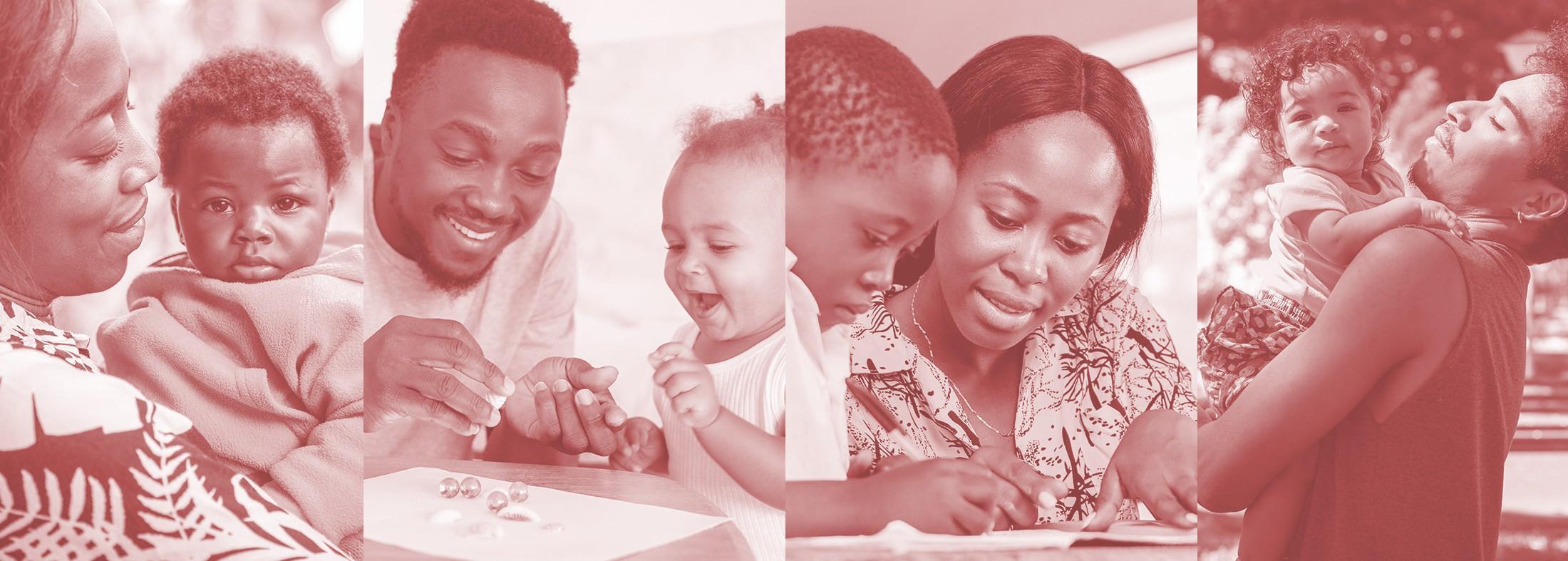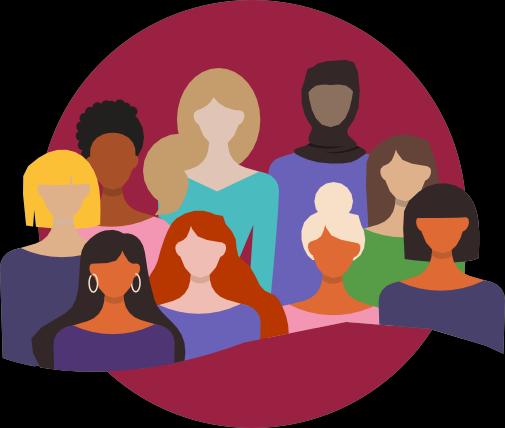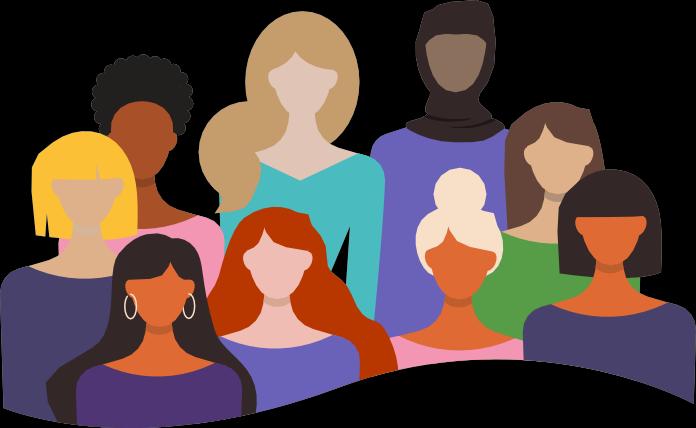






9 August Women’s Day
The 09th of Augustis celebratedas NationalWomen’sDay, a day that marks a historic event in SouthAfrica. On the 9th of August 1956, about 20,000 women from all walks of life marched to the Union Buildings in Pretoria on this day to express their disapproval of the apartheid regime’s discriminatory pass laws which required Black SouthAfricans to carrypass books, thus restricting their movement. This momentous women’s march was an important turning point in SouthAfrica’s fight for gender and racial equality as it showed the strength and perseverance of women who fought for freedom and equal rights and drew attentionto the persistent efforts needed to advance women’s rights and gender equity.
AlthoughSouthAfrica has made significant progress towards gender equality since the end of apartheid, challenges still exist. Women’s Day seeks to tackleissuessuch as gender-based violence, unequal access to healthcare and education,economic empowerment, reproductive rights, legal rights and protection and the need for more women in leadership positions.
This day serves as a reminder of the bravery and tenacity shown by women in their struggle against discrimination and injustice. It honors historical accomplishments while fostering the pursuit for a more just and inclusive society.
Below is research from CoE-HUMAN researchers/grantees that showcases some of these challenges that persist regarding women.

Women’sday: celebratingthecourageand determinationby women in the fight against injusticeand inequality.

Advocating for an integrated healthcare model for women of reproductive age in low- and middleincome countries.
Women of reproductive age’s health is increasingly defined by the coexistence of multiple morbidities throughout different life phases, which frequently go unnoticed until pregnancy.
The prevalence of multi-morbidity among women is particularly high in low- and middle-income countries (LMICs), where it is frequently linked to broader socioeconomic and environmental factors that are often overlooked until pregnancy, exacerbating these complex health issues.
A commentary by Stuart et al. (2025) challenges the conventional disease-centric models that ignore systemic inequities and promote integrated, equitydriven healthcare solutions that are suited to LMIC contexts. These strategies go beyond traditional maternal and child health frameworks.
The conceptual model for the integrated healthcare of women of reproductive age, used Bronfenbrenner’s bio-ecological process-person-context-time (PPCT) paradigm to show how multimorbidity, risk behaviours, and social factors are linked throughout life stages in LMICs with limited access to healthcare services. The model links macro-level factors such as socioeconomic inequality and systemic healthcare shortcomings with micro-level variables such as individual behaviours and health literacy. A comprehensive understanding of health outcomes is provided by this holistic approach, especially in environments with limited resources. Social determinants such as poverty, health literacy, social support, trauma exposure, food insecurity, and housing instability intersect with healthcare system issues and influence maternal health and wellbeing, fetal development, and long-term child health outcomes. The model demonstrates how interrelated ecological layers and modifiable risk behaviours contribute to the multimorbidity of non-communicable diseases (NCDs) and communicable diseases (CD) throughout the life course. As a result, it provides a framework for context-sensitive interventions that address these complexities on multiple levels.
Promoting lifestyle modifications at various life stages is a key component of this strategy. Individual behavior change interventions, such as encouraging healthier diets, regular exercise, cessation of substance use, and improving health literacy, can reduce health risks, make it easier to identify infections or chronic diseases early, and guarantee prompt access to care. The cost-effectiveness and contextual relevance of integrating delivery methods such as telemedicine, community health education initiatives, and services provided by community health professionals are highlighted. These strategies have a higher chance of
being adopted by the community, which will increase their sustainability.
At several ecological levels, culturally appropriate treatments can also be incorporated into this model, such as encouraging traditional anti-inflammatory diets and physical activity.
This integrated framework expands the healthcare perspective beyond reproductive outcomes, to encompass general health and well-being throughout the life course. To address multi-morbidity and mitigate subsequent consequences on maternal and child health, the model recognises the importance of preconception care as a vital stage for intervention.
Enhancing the health of reproductive-age women in LMICs has major advantages for achieving the Sustainable Development Goals (SDGs), promoting gender equality, reducing poverty, and improving global health (United Nations Statistics Division, 2022).
The suggested integrated healthcare paradigm, according to the authors, provides a straightforward, feasible route to more effective and equitable healthcare systems. By giving reproductive-age women’s health top priority throughout their lives and in socioeconomic settings, this paradigm not only enhances individual well-being, but also supports broader social stability and economic growth in LMICs. https://doi.org/10.1080/09581596.2025.2512842

Young women’s health behaviours in context: a qualitative longitudinal study in the Bukhali trial.
Draper et al. (2025) conducted a qualitative longitudinal study to investigate Bukhali trial participants’ perceptions of health and health behaviours over time and in relation to their life circumstances.
The Bukhali trial is carried out in Soweto, South Africa, including young women aged 18 to 28. Following their randomisation into the trial in October 2020, a subsample of 35 participants were selected from the intervention and control arms to take part in a series of follow-up individual interviews during the first twelve months of the trial (preconception phase) for this qualitative longitudinal study. Of this group of 35, 21 participants completed the entire set of interviews; 14 participants could not be contacted or could not be scheduled for at least one session. Of these 21, the caregivers of 10 participants were also interviewed. However, despite efforts to contact all caregivers identified by participants, interviews with the caregivers of the remaining participants could not be scheduled for a variety of reasons (e.g., not reachable, unavailable for an interview, unwilling to participate, not residing in the area, participant unable to identify a caregiver to interview).
Using a longitudinal case analytic approach, four themes emerged: (i) trial experiences, (ii) health behaviours and changes, (iii) living circumstances, and (iv) health views. Additionally, data were analysed using the idea of ukuphumelela (or “flourishing”), which was first discussed in Soweto and included in the final interview. This concept helped participants comprehend how social dynamics and external or structural factors as opposed to internal or personal ones dominantly influence their health behaviours and life paths, especially when it comes to
overcoming adversity.
The timelines and relationship maps prompted participants to describe their current circumstances, which gave context for their experiences. “Difficult” situations and “difficulties” appeared to be a common way to describe the life histories of the participants, and for many of them, these conditions have continued into the present. Many of the participants appeared to still be dealing with the stress of challenging circumstances and the trauma of past occurrences, even though others stated that these conditions improved during the year in which they were interviewed. Although this status, particularly employment status, changed throughout the year, most participants had limited access to education and employment opportunities. Only a small percentage of participants mentioned the COVID-19 pandemic’s consequences, but overall, there appeared to be instability in various parts of their lives.
In general, participants appeared to have poor health literacy as they struggled to explain or discuss the concept of health in detail. Some individuals reported that their health had improved, but it was unclear if their understanding had changed much over the course of the year. Physical exercise, screen time, sleep, and abstaining from dangerous behaviors like smoking and drinking were mentioned a few times, and health was commonly thought of as physical and associated with health behaviours, particularly dietary behaviour. Insofar as they discussed adopting good habits to reduce weight or lower the chance of developing other physical diseases, several participants attributed being overweight or obese to physical health. While some recognised
the inclusion of mental health and others defined health as the absence of illness, few discussed the connection between mental and physical health or how mental health may influence health behaviours, which others defined as “stress.” It was also mentioned that overeating was a coping mechanism for stress and trauma.
Participants reported a pleasant experience with the Bukhali study. Most participants reported that waiting times and staff treatment were better than those provided at the clinic, and they felt that they received better services because of participating in the trial (such as free HIV and pregnancy testing).
Although some participants’ health and health-related behaviours changed over time, this study also highlighted many of the issues reported in previous studies conducted with HeLTI and in Soweto. Although mental health has been prioritised in this context, frequently more so than physical health, it was clear that not much is known about mental health (symptoms, treatment, and impact), particularly the connections between mental and physical health.
Most participants seemed to have grown more conscious of the significance of overall health during the course of the study. Among the positive changes that participants reported this year were increased self-esteem and a willingness to communicate, both of which are likely to have had a favourable effect on their mental health and are strong indicators that these young women are placing a higher importance on their health. https://doi.org/10.1016/j. ssaho.2025.101622

Public transport systems and safety of female commuters in low-and-middle-income countries: a systematic scoping review.
Public transportation systems are crucial for urban populations around the world to have access to social activities, work, and basic services. This is especially true in low- and middle-income countries (LMICs), where they are frequently the main source of transportation for women in both the formal and informal sectors. Despite its importance, the safety of female commuters has become a critical concern. This includes a wide range of issues, such as sexual harassment (e.g., inappropriate sexual jokes or comments, unwanted sexual advances or propositions, sending or displaying sexually explicit materials, and unwanted touching or groping with a sexual intent); physical harassment or violence (e.g., hitting, pushing, shoving, unwanted touching or grabbing); and severe forms of sexual violence, such as sexual assault or rape.
A scoping assessment by Prof. Gugu et al. (2025) systematically maps and summarises research findings about the safety of female commuters in public transportation systems in LMICs.
The methodological framework developed by Arksey and O’Malley was used by the authors to structure this scoping review. The authors used the Population (females), Concept (transit/public transportation safety), and Context (LMICs) frameworks to determine their eligibility requirements. They searched for original research publications published between 2012 and 2023 and updated in February 2025 in PubMed, EBSCOhost (CINAHL, PsycInfo, and Health Source: Nursing/ Academic Edition), SCOPUS, and Web of Science. In order to find any further relevant research, the authors additionally searched through the Google Scholar platform and the reference lists of
the included studies. Two reviewers used forms that had been pilot tested to identify studies and extract data. The data was categorised into themes using thematic analysis, and a narrative synopsis of the results was provided.
The study question for this scoping review was: What study findings over the last ten years have been linked to public transportation systems and the safety of female commuters in LMICs? The Population, Concept, and Context (PCC) framework was integrated into the study eligibility criteria to determine the appropriateness of this scoping review topic. This scoping review’s exclusion criteria ensured the safety of female commuters in LMIC public transportation systems was the focus of the investigation. After reviewing 114 potentially suitable publications from various databases, 26 studies were selected for data extraction and analysis. Duplicate articles and those that failed to meet the study’s eligibility requirements were excluded. This analysis found that women commuters in multiple countries face serious safety problems, especially the threat of harassment and assault. Among the 26 studies that were analysed for this study, South Africa had the highest representation (n = 6 studies, 19%), followed by India and Malaysia, each of which contributed 4 studies (15%).
It was also evident that violence against women was common in public transportation systems and that it had serious negative effects on social, psychological, economic, and health aspects of life. Women began using defensive tactics, such as avoiding particular times or locations when traveling, because of the widespread problem of transit sexual assault. Another significant issue in several studies was the fear
of crime in particular areas, such as inside buses or at crowded stations. Infrastructure, crowding, and the presence (or lack) of security measures were cited as key factors affecting women’s safety on public transport. Studies have also examined the issues around the use of condoms in transactional relationships between women and taxi drivers, highlighting the intricate power dynamics at play. Lastly, a variety of remedies put forth in the literature such as crowd control, better reporting systems, community engagement, gender-sensitive transportation, and more surveillance showcase an all-encompassing strategy for enhancing safety. Prior to wider adaptation, it is necessary to evaluate the efficacy of various interventions in particular circumstances.
The findings of this scoping review highlight the need for a more thorough knowledge of women’s safety on public transit, especially in LMICs. According to this scoping review, there are notable gaps in the literature regarding the safety of female commuters in LMICs. Geographic imbalance, the predominance of quantitative methods, and a limited number of studies underscore the need for more inclusive and varied research, especially in underrepresented countries.
The authors report that guaranteeing women’s safety when using public transport requires cultural sensitivity, improved infrastructure, and policy reforms. To develop evidence-based policies and practices that address the complex issues surrounding women’s safety in public transportation, cooperation between researchers, policymakers, and practitioners is crucial. https://doi. org/10.1186/s12905-025-03821-0







